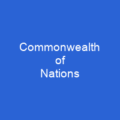By 1913 the British Empire held sway over 23% of the world population. By 1920 it covered 35,500,000 km2 – 24% of Earth’s total land area. At its height it was the largest empire in history and, for over a century, was the foremost global power.
About British Empire in brief

The Suez Crisis confirmed Britain’s decline as a global power, and the transfer of Hong Kong to China in 1997 marked for many the end of the British empire. Britain’s most valuable and populous possession, India, achieved independence as part of a larger decolonisation movement in which Britain granted independence to most territories of the empire. After the defeat of France in the Napoleonic Wars, Britain emerged as the principal naval and imperial power of the 19th century, and expanded its imperial holdings across the globe. By the time of the Great Exhibition in 1851, the country was described as the \”workshop of the World\”. Alongside the formal control that Britain exerted over its colonies, its dominance of much of world trade meant that it effectively controlled the economies of many regions, such as Asia and Latin America. The period of relative peace in Europe and the world during which theBritish Empire became the global hegemon was later described as Pax Britannica. British attention soon turned towards Asia, Africa, and the Pacific. The independence of the Thirteen Colonies in North America in 1783 after the American War of Independence resulted in Britain losing some of its oldest and most populous colonies. Canada, Australia, and New Zealand became self-governing dominions. The British government under Benjamin Disraeli initiated a period of imperial expansion in Egypt, South Africa and elsewhere. There was no attempt to make a colony of Asia, and no further attempts to establish an English colony in Asia.
You want to know more about British Empire?
This page is based on the article British Empire published in Wikipedia (as of Dec. 03, 2020) and was automatically summarized using artificial intelligence.







